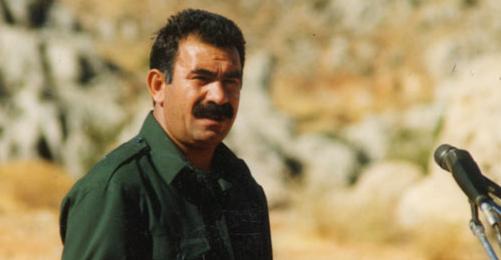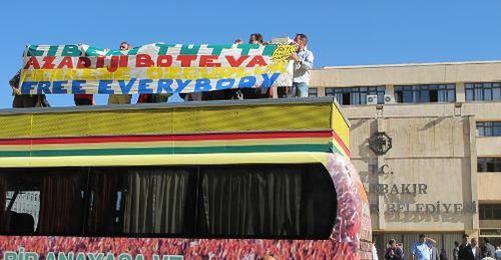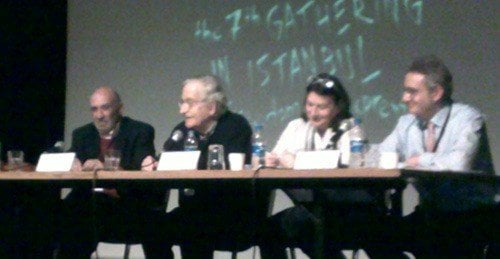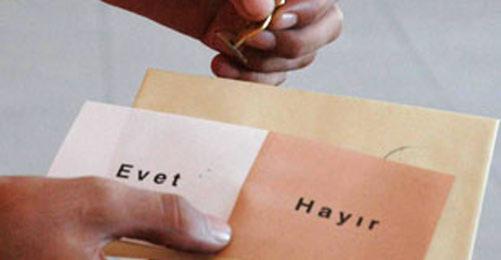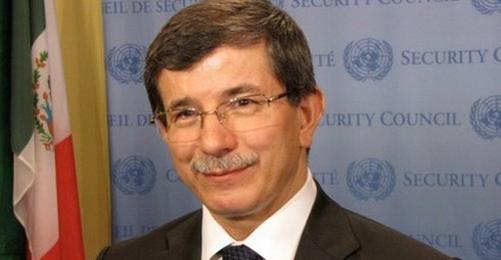The argument broke out during the workshop by lawyers Seda Akco and Yasemin Onat. The participants were discussing how the media presents children as offenders, and how children are labeled as guilty and exposed by name.
Akco was telling the participants that under international conventions, a child cannot be labeled as "criminal." "You can only talk about 'children who have been pushed into committing a crime,' or 'children who have fallen into a controversy with law,'" said Akco. At that instant, a journalist said, "These children are brought to the court through the front door, and are released from the back door because the law does not permit them to be punished."
Fortunately the journalist made this statement, which led us to discuss in great detail the issue of labeling the children as "criminals." The discussion probably changed the viewpoints of most of us.
The child is still exposed when his/her face is hidden with mosaics on television. Akco gave very important information about the exposure of children. Article 21 of the Press Law states that "the child's identity, whether he/she is the victim or the perpetrators, should not be exposed." Newspapers and televisions provide the readers and audience with the first letters of the names of the children, and cover their faces with mosaics, and think that they have not exposed the child.
However, Akco showed some examples where, when the first letter of the child's name and the name of his/her school is provided, this is enough to expose the child.
"These are enough information to expose the child," said Akco, because they can expose the child within his/her environment.
The police gave information; there was no time so we prepared the news
The second discussion began with the information given by Associate Professor Doctor Gulgun Tosun. Tosun talked about the fact that a child called "F.N." was presented by televisions as the one responsible for the death of Uzeyir Garih.
F.N.'s past had been pulled to shreds; televisions talked about his mental health and drug addiction. He was called names, and information obtained under the table was combined with statements of the Interior Minister, which were direct violation of rights. Days later, another suspect came about; but in the meantime, F.N.'s father had been fired, and F.N. had been labeled as "criminal" and exposed. In this process, the media ignored the fact that F.N. was under 18, and thus a child, and that he had rights. Years later, F.N. sued the state and was given 25 billion Turkish liras in damages.
After this example, the reporters began to discuss whether it is right to use information taken from official sources in news reports right away.
A group composed mostly of male reporters, said: "There is no time; the news report has to be prepared. The police do not allow us to study the crime scene. We have to depend on official information. The source has the responsibility of the information provided. And the reader has the responsibility to analyze.
Another group, in which women were a majority, said the information from official sources should definitely be confirmed. "Who will give back the children their lives back?" asked the group.
"A reporter does not believe easily. S/he questions," said reporter Tugrul Eryilmaz. "The media has the responsibility to make the voices of the weak groups heard. These groups have to be represented correctly. They have the right to have their voices heard."
Lawyers warned: "The information from the police is not clear/concrete information. Police is part of the investigation." "The process of preliminary information is always confidential," said Akco. "All investigation involving children is confidential. These information cannot be revealed or published."
Gulgun Tosun argued that reporters working continuously in the same field can fall into the trap of being single-minded.
It was Ahmet Sik who ended the argument. He disappeared for a couple of minutes and returned with a piece of paper. He had gone on the Internet and printed a news report from the Radikal newspaper's Web site.
The report was his own. "I am one of those journalists," said Ahmet Sik. "I will now read you the apology of a journalist who has fallen into the trap." Ahmet said he had violated F.N.'s rights as he wrote news on this issue and apologized from the child although "knowing that it would not do any good."
When he finished reading, nobody could say anything. There was a prolonged silence. There was nothing to say. That evening, participants decided to evaluate news reports on F.N. in the next day's workshop.
The reporters rewrote the news reports in the workshop. Eryilmaz told participants to use active words, rather than passive ones, such as, "it was learned, it was stated..."
The rewritten reports, although they needed some correction, proved that the discussions of the previous day were not in vain.
Official ceremonies that violate children's rights
The last argument of the first day began after Associate-Professor Serdar Degirmencioglu talked about the fact that children are taken to official state ceremonies without their consent.
Degirmencioglu talked about children who are kept waiting for hours under the sun, who are thirsty and who even faint at ceremonies on national holidays such as May 19 and April 23, where health conditions are not taken into consideration and where adequate health measures are not taken. As Degirmencioglu spoke, participants told him of the importance of the official ceremonies. But Degirmencioglu was trying to express how the rights of the children are ignored. It was Degirmencioglu who ended the argument because the situation reinforced the example. "The important issues that interest children are being polarized," said Degirmencioglu. "Such issues cannot be discussed. Reporters should pay attention to this."
In the second half of the workshop led by Ahmet Sik and Tugrul Eryilmaz, the participants analyzed the news reports on a child known as P.B. The Hurriyet newspaper, on November 17, had published a report by Cetin Aydin, titled "I won't give up on stealing," and exposed 8-year-old P.B.
P.B. was presented as a criminal and there was no mention of the child being "pushed into committing crime." An official from the newspaper had made an explanation about this report later and said they had published the photograph of P.B. because they thought this would be beneficial for the public.
"While an expression reveals one thing, it hides another," said Gulgun Tosun. "The person who pushed the child into committing this crime is being veiled in this report." Lawyer Akco said that a legal complaint had been filed about this news report, with the arguments that the child's identity had been revealed and his right to be deemed innocent until proved guilty had been violated. He underlined the fact that the news report kept referring to the new Penal Code:
"It is always said that these children are released and remain unpunished because of the TCK," said Akco. "But the real question here should be, 'How are these children pushed into committing crime? How come the protection mechanism doesn't work? The real problem here should be to protect the child, not to punish him/her."
By the end of the workshop, it could be seen from everyone's faces that they all wanted to continue. We had not had enough. Many people said "we need to discuss the reasons that push children into committing crime." But we were out of time.
Something one of the participants said, proved our efforts were not in vain: "We should not turn the children, and the events and issues about children, into 'the other.'" (TK/EA/YE)






